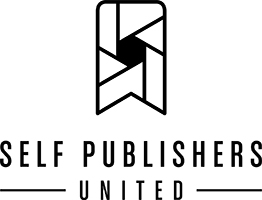Through various art forms, we brought our family histories into our own lives,
What did you enjoy the most about making this book?
The best thing about making this book was the collaboration with my sister-in-law Yuen Yee Li. During the process, we found out that we could both be Chinese and Dutch. I became part of Yuen Yee’s family; her history was now my history and vice versa. We became each other’s roots through the connections between our families in history: both families had moved from one place to another, within or across borders. That is why this book is designed so that the two lines of our family histories meet on opposite pages. Becoming roots is not limited to time, space, cultures, families or clans. It has no limits.

What was the motivation behind this project?
My sister-in-law Yuen Yee and I wanted to investigate what it means to have roots. Through various art forms (photography, Chinese calligraphy and text) we brought our family histories into our own lives. In our book ROOTING, I forged my connection by photographing and dissecting heirlooms in a white, almost transparent laboratory environment. I made the invisible visible and was transforming the past into a lived presence. Lifeless objects became a way to touch my roots.
Yuen Yee explored how she could connect with both her Hong Kong-Chinese roots and her Dutch adopted roots. The oscillating tension between both sets of roots is visualized by not translating the Chinese texts into English or Dutch and vice versa.
Yuen Yee and I hope that our book ROOTING will enable people from different backgrounds to visit each other and to start a conversation.
Finally, we are thankful to the Rijksmuseum for taking up our book ROOTING in their Special Collections. It is now part of our collective roots and history, accessible to everyone.


Can you mention 2 photobooks that inspired you during the making of your book?
Two photobooks that have inspired me enormously are the book ‘Belgium Autumn’ by Jan Rosseel and the exhibition catalogue ‘Tsunami, Photographs, and Then’ by Munemasa Takahashi.
The book ‘Belgian Autumn’ is a personal quest by Jan Rosseel to the ‘Gang of Nivelles’ which committed bloody robberies on Belgian supermarkets. In all, twenty-eight people were killed. Jan Rosseel’s father was one of them.
The exhibition catalogue ‘Tsunami, Photographs, and Then’ documents the aftermath of the 2011 earthquake and tsunami that devastated a large swath of Japan’s coastline. Volunteers scanned family photographs recovered from the wreckage, with the aim of returning them to the rightful owners. But those that were too heavily damaged were thrown into a ‘hopeless’ box. Takahasi took these ‘hopeless’ images and turned them into a traveling exhibition. This catalogue conveys the power of the personal snapshot to humanize tragedy.
Can you say something about the editing of your book? Did you work alone? Did you work with an image editor and designer?
An intensive collaboration with a creative team preceded the making of this book ROOTING. The design of the book had to convey the theme and was created by Sybren Kuiper. The book ROOTING radiates transparency and visualizes layering. The book has no ends and no beginnings. It can be read front to back, and back to front. In addition, the book can be viewed with or without text. Lithographer Sebastiaan Hanekroot then ensured that the photographs retained their transparent appearance. Jos Morree was responsible for the printing process on a LED-UV color printing press. Finally, the challenging design of Sybren Kuiper has been turned into a book by bookbinder Wytze Fopma.

Knowing that every detail is important, could you mention some technical detail that was of special importance for the realization of the final product? Like cover design, paper selection, printing technique…
Our book ROOTING was designed by Sybren Kuiper so that it can be viewed in multiple ways, with and without text. The photographs and calligraphy can speak for themselves, but the history behind the photographs and calligraphy was also important to us. The text is hidden under strips of paper on which the photograph continues. Folding the strips was painstaking work. A lot of manual work was involved here. The collection of pages is also done manually. This concerned 204 sheets per book! In bookbindery Stronkhorst they have worked hard on this, under the guidance of Wytze Fopma.
Then there is also a large explanatory text hidden in a third panel on the cover, which can be folded out. The blind debossed front and back cover was made on an antique heavy metal printing press Karl Krause at bookbindery Fopmawier. Here, the book has also been carefully put together.







